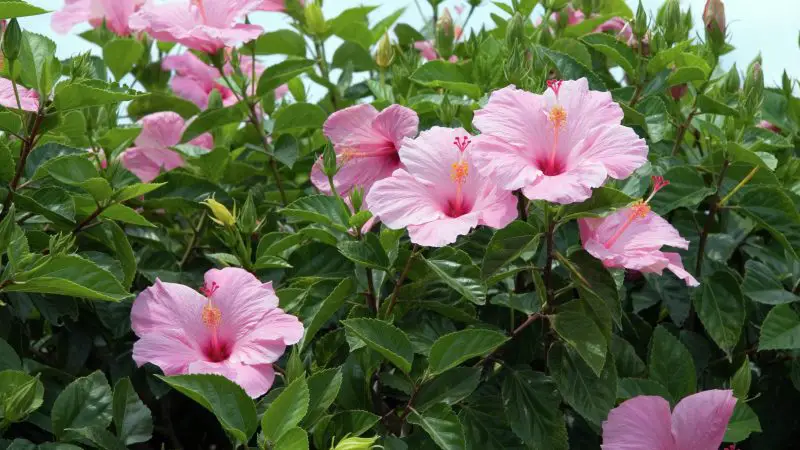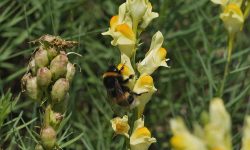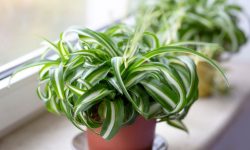Few flowers can rival the tropical charm and vivid beauty of the hibiscus. With its bold, trumpet-shaped blooms and lush green foliage, the hibiscus plant instantly turns any garden, balcony, or patio into a vibrant oasis. But behind its dramatic display lies a surprisingly simple care routine—if you know what to do.
In this guide, you’ll discover how to grow hibiscus plant like a pro. From choosing the right variety to mastering sunlight, watering, and feeding, we’ll walk you through everything you need to achieve nonstop blooms from spring to fall. Whether you’re a beginner or a seasoned gardener, these expert tips will help you unlock the full potential of this spectacular plant.
Understanding the Different Types of Hibiscus

Tropical Hibiscus vs. Hardy Hibiscus
Before you begin, it’s important to understand which type of hibiscus you’re growing. Tropical hibiscus, commonly found in garden centers, features glossy leaves and blooms in vivid shades of red, orange, pink, or yellow. These plants prefer consistently warm temperatures and are sensitive to cold.
Hardy hibiscus, on the other hand, is cold-tolerant and can survive freezing winters in USDA zones 4 through 9. These varieties produce large, dinner-plate-sized flowers and tend to bloom later in the summer but continue profusely into fall.
Choosing the Right Variety for Your Climate
Choosing the right hibiscus for your climate ensures healthy growth and abundant blooms. In warm regions (USDA Zones 9–11), tropical hibiscus (Hibiscus rosa-sinensis) thrives year-round but must be protected from frost. It’s ideal for places like Florida or coastal California. In colder zones (4–8), hardy hibiscus (such as Hibiscus moscheutos) is the better choice, tolerating freezing winters and returning each spring with bold, showy flowers.
If you live in dry or borderline climates, look for heat-tolerant hybrids or grow tropical hibiscus in pots that can be moved indoors. Matching the plant to your conditions leads to easier care and longer-lasting blooms.
Choosing the Best Location for Your Hibiscus
Full Sun Is Essential
Hibiscus plants are sun-loving and rely on abundant sunlight to produce their large, vibrant blooms. For optimal flowering, they need at least 6 to 8 hours of direct sunlight each day. Morning sun is particularly beneficial because it helps dry moisture from the leaves, reducing the risk of fungal diseases and encouraging healthy growth.
Without enough light, hibiscus may grow tall and leggy, with fewer buds and blooms. The plant may still survive in partial shade, but flower production will be significantly reduced. If you’re growing hibiscus in containers, place them in the sunniest location possible, such as a south-facing patio or balcony.
In extremely hot climates, some light afternoon shade can help protect tropical hibiscus from leaf scorch and excessive wilting. However, too much shade—even just a few hours of lost sun per day—can lead to fewer flowers and slower growth. Consistent, full sun exposure is the key to lush foliage, strong stems, and nonstop blooming all season long.
Well-Draining Soil Is a Must
Hibiscus plants thrive best in soil that drains well yet retains enough moisture to support consistent hydration. Poorly drained soil can cause water to accumulate around the roots, leading to root rot, yellowing leaves, and stunted growth. On the other hand, soil that dries out too quickly can stress the plant and reduce flowering.
The ideal soil for hibiscus is loamy, rich in organic matter, and slightly acidic to neutral, with a pH between 6.0 and 7.0. If you’re working with heavy clay, break it up and mix in compost, aged manure, or coarse sand to improve texture and drainage. Sandy soils should also be enriched with organic matter to hold moisture better.
For container-grown hibiscus, always use a lightweight, well-aerated potting mix designed for flowering plants. Avoid using garden soil in pots, as it can compact and restrict drainage. Adding perlite or coconut coir to your mix can further enhance water flow and oxygen availability around the roots. Good soil is the foundation of a healthy, blooming hibiscus.
How to Plant Hibiscus for Healthy Growth
Planting in the Ground
When planting hibiscus in your garden, dig a hole twice as wide and just as deep as the root ball. Gently loosen any circling roots to encourage outward growth and stronger anchoring. Position the plant so that the crown—where the stem meets the roots—sits level with the surrounding soil, not buried below it. This helps prevent stem rot and promotes healthy root development.
Backfill the hole with a mix of native soil and organic compost to enrich nutrients and improve drainage. After planting, water deeply to settle the soil around the roots and eliminate air pockets.
Spacing is equally important. Most hibiscus varieties grow three to six feet wide and tall, depending on type and growing conditions. Allowing adequate space ensures proper air circulation, which helps reduce the risk of fungal diseases such as leaf spot and powdery mildew. It also gives your hibiscus room to expand naturally without overcrowding nearby plants.
For best results, plant during spring or early summer when the soil is warm and the plant has an entire growing season to establish itself. In cooler climates, avoid late-season planting, as young hibiscus may not have time to develop a strong root system before winter dormancy.
Planting in Containers
Watering Techniques for Optimal Blooming
Consistent Moisture Without Overwatering
Maintaining consistent soil moisture is key to healthy growth and abundant blooms in hibiscus plants. These plants dislike extremes—both overly dry and constantly soggy soil can cause stress, leading to yellowing leaves, bud drop, or even root rot. The goal is to keep the soil evenly moist, allowing the top inch to dry slightly between waterings.
During the active growing season, especially in hot summer months, hibiscus may require frequent watering—sometimes daily for container-grown plants exposed to full sun. Garden-grown hibiscus usually needs deep watering a few times per week, depending on weather and soil type.
Overwatering is a common mistake, often caused by poor drainage or watering too frequently without checking the soil. Always feel the soil before watering, and ensure pots have adequate drainage holes to allow excess water to escape.
Applying a layer of mulch around the base of garden hibiscus helps retain soil moisture, reduce evaporation, and regulate soil temperature. This is especially helpful in hot climates or during dry spells. Proper watering habits not only support lush growth but also help your hibiscus resist pests and diseases more effectively.
Adjusting Watering Based on the Season
Hibiscus watering needs change with the seasons. In spring and summer, when the plant is actively growing and blooming, it requires more frequent watering to keep the soil consistently moist. During hot weather, container plants may need water daily.
As temperatures cool in fall, reduce watering gradually to match the plant’s slowing growth. In winter, tropical hibiscus grown indoors enters a semi-dormant phase and needs only occasional watering—just enough to prevent the soil from drying out completely. For hardy hibiscus in the ground, stop watering after the plant dies back in late fall. Adapting your watering schedule helps prevent stress and supports strong seasonal growth.
Feeding Your Hibiscus for Nonstop Blooms
To keep your hibiscus blooming continuously through the growing season, consistent and balanced feeding is essential. Hibiscus plants are heavy feeders, meaning they require more nutrients than many other garden flowers to support their rapid growth and prolific flowering habits.
Choose a fertilizer specifically formulated for blooming plants—ideally one with moderate nitrogen (N), low phosphorus (P), and high potassium (K), such as 10-10-15, 15-5-30, or similar. Potassium plays a key role in boosting bud formation, flower size, and color intensity. Avoid fertilizers that are too high in nitrogen, as they can cause the plant to produce abundant leaves at the expense of flowers.
During the active growing period—typically from early spring through late summer—feed your hibiscus every two to four weeks. Liquid fertilizers are quickly absorbed and especially useful for container-grown hibiscus, while slow-release granular formulas offer steady nourishment over time for in-ground plants.
You can also supplement with organic options such as compost tea, fish emulsion, or seaweed extract, which gently enrich the soil while improving microbial activity and overall plant health. These organic additions are particularly beneficial when alternating with synthetic fertilizers or when growing hibiscus in containers with limited nutrients.
As temperatures begin to cool in late summer or early fall, gradually reduce feeding. Stop fertilizing about six weeks before the expected first frost, especially for hardy hibiscus, to allow the plant to slow its growth and prepare for winter dormancy.
Proper feeding not only encourages nonstop blooming but also enhances foliage color, strengthens stems, and boosts your hibiscus’s resilience against pests and environmental stress.
Pruning Techniques to Encourage More Blooms
When and How to Prune
Pinching for Bushier Growth
Pinching is an easy yet highly effective technique to encourage your hibiscus to grow fuller and produce more flowers. By removing the soft, tender tips of new growth with your fingers or a pair of clean scissors, you signal the plant to branch out from just below the pinch point. Instead of growing tall and spindly, your hibiscus will develop multiple stems, creating a bushier, more compact shape.
Begin pinching early in the growing season—usually in spring—when the plant starts putting out fresh growth. You can repeat the process every few weeks throughout the summer to maintain a full shape and maximize blooming potential. Each pinch typically results in two or more new shoots, increasing the surface area for flower buds to form.
Pinching is especially useful for young plants or those that tend to become leggy. Over time, it leads to a denser canopy, improved air circulation, and a plant that looks lush and vibrant from top to bottom. This simple task, done consistently, can make a big difference in the beauty and productivity of your hibiscus.
Managing Pests and Diseases Naturally
Common Pests on Hibiscus Plants
Hibiscus plants are prone to a few common insect pests, including aphids, whiteflies, spider mites, and mealybugs. These pests feed on plant sap, weakening the plant and often leading to distorted growth, yellowing leaves, or stunted buds. You may also notice a sticky substance (honeydew) on leaves, which can attract ants or promote sooty mold.
Inspect your hibiscus regularly, especially the undersides of leaves and new growth where pests like to hide. For early or light infestations, use a strong blast of water from a hose to dislodge them. If the problem persists, apply neem oil, insecticidal soap, or horticultural oil—these organic treatments are safe for beneficial insects and pollinators when used as directed. Keeping your hibiscus well-fed and stress-free also improves its resistance to pests.
Preventing and Treating Fungal Issues
Fungal problems such as leaf spots, powdery mildew, and rust are often triggered by excess moisture and poor air circulation. These diseases can cause blemished or yellowing leaves, a white powdery coating, or rusty pustules that eventually defoliate the plant. While not usually fatal, they weaken hibiscus and reduce blooming.
To prevent fungal issues, plant your hibiscus where air flows freely and avoid overhead watering, especially in the evening. Water early in the day and keep foliage as dry as possible. At the first sign of infection, remove affected leaves and dispose of them away from the garden. Organic fungicides made from copper or sulfur can help stop the spread. Also, sterilize pruning tools between uses to avoid spreading spores from one plant to another.
Growing Hibiscus in Containers Indoors or Over Winter
Growing hibiscus in containers makes it easier to protect the plant during colder months or harsh weather. Tropical hibiscus varieties, in particular, are sensitive to frost and cannot survive freezing temperatures. If you live in a region with cold winters, bring potted hibiscus indoors before temperatures drop below 50°F (10°C).
Place the plant in a bright, south-facing window where it can receive at least six hours of sunlight a day. If natural light is limited, consider using grow lights to supplement. Indoor air tends to be dry in winter, so mist the plant occasionally or place a humidity tray nearby to maintain moisture around the foliage.
Water sparingly during winter, allowing the top inch of soil to dry out between waterings. Growth will slow down, and the plant may drop a few leaves, which is normal. Avoid fertilizing during this dormant period. Once spring returns and temperatures stay consistently above 60°F (15°C), gradually acclimate the plant to outdoor conditions before moving it back outside for the growing season.
Encouraging Continuous Blooming All Season
Deadheading and Removing Spent Flowers
Even though hibiscus blooms typically last only a day or two, regularly removing spent flowers—also known as deadheading—encourages the plant to direct its energy toward producing new buds rather than seed development. This simple task not only promotes more continuous blooming but also keeps the plant looking neat and vibrant. Old petals left on the plant can trap moisture and attract fungal issues, especially in humid climates.
Tropical hibiscus varieties often produce new flowers daily, making daily deadheading beneficial during peak bloom. Hardy hibiscus, which may flower over several weeks, also benefits from this upkeep. Use clean hands or sterilized scissors to gently remove faded blooms without damaging nearby buds or stems.
Preventing Bloom Drop
Hibiscus plants sometimes form buds that fail to open and drop prematurely, a frustrating issue often caused by stress. Inconsistent watering—either too much or too little—can cause the plant to shed blooms before they open. Likewise, sudden changes in temperature, such as bringing a plant indoors or outdoors too abruptly, can trigger bud drop.
Nutrient deficiencies, particularly a lack of potassium or phosphorus, may also play a role. To reduce stress, water consistently, especially during hot weather, and avoid relocating your plant once it has set buds. Feeding your hibiscus with a balanced or bloom-boosting fertilizer rich in potassium helps support strong, lasting flowers. Protecting the plant from wind and temperature extremes further ensures healthier blooms.
Propagating Hibiscus for More Plants
Stem Cuttings for Easy Cloning
Propagating hibiscus from stem cuttings is one of the most effective and rewarding methods for producing identical new plants. Choose softwood cuttings in late spring or semi-hardwood ones in summer, ideally from healthy, vigorous stems that haven’t flowered yet. Each cutting should be about four to six inches long and include at least two or three leaf nodes.
Remove the lower leaves to expose nodes and minimize moisture loss. Dipping the cut end in rooting hormone boosts root development, especially in tropical varieties. Insert the cutting into a small pot filled with a light, well-draining propagation mix—like perlite and peat or coconut coir. Keep the medium consistently moist but not soggy.
Place the pot in a warm spot with high humidity and bright, indirect sunlight. Covering the cutting with a plastic dome or clear bag can help retain humidity. Roots typically form in four to six weeks, though success rates can vary. Once roots are well established and new growth appears, transplant the cutting into a larger pot or into the garden.
Layering and Division
For gardeners growing hardy hibiscus, division is a reliable propagation technique, especially for older, clumping varieties. In early spring, just as new growth begins to emerge, dig up the root clump and gently separate it into sections. Each section should have a healthy root system and a few visible buds or stems. Replant the divisions immediately in well-prepared soil, spacing them appropriately for their mature size.
Layering is a simple, hands-off method that works for both tropical and hardy hibiscus. Choose a healthy, flexible stem near the base of the plant and gently bend it to the ground. Nick the underside of the stem slightly, cover that section with moist soil, and secure it in place with a stone or pin. Keep the area moist, and in a few months, the buried section will form roots. Once rooted, cut the new plant from the parent and transplant it into its own spot.
Both techniques allow you to expand your hibiscus collection with minimal stress to the plant and without the need for special equipment.
FAQ: Most Frequently Asked Questions About Growing and Caring for Hibiscus
Where Should I Plant My Hibiscus for Best Growth?
Hibiscus thrives in full sun and needs at least six hours of direct sunlight daily to bloom well and maintain strong growth. Choose a location with rich, well-draining soil and good airflow to minimize disease problems. For tropical hibiscus grown in containers, place the plant on a sunny patio, balcony, or near a bright indoor window. In regions with cold winters where temperatures fall below 50°F (10°C), it’s best to grow tropical hibiscus in pots so they can be moved indoors before frost arrives.
How Often Should I Water Hibiscus and What Is the Best Way?
Consistent watering is essential for hibiscus health and flowering. The soil should stay evenly moist but never soggy. During hot weather, hibiscus may need watering two to three times a week, depending on soil type and exposure. In cooler weather or winter, reduce watering frequency to avoid root rot. The best method is to check the top inch or two of soil and water deeply when it feels dry. For container-grown hibiscus, make sure the pot has drainage holes and avoid letting water pool in the saucer beneath.
When and How Should I Prune My Hibiscus?
Pruning is best done in late winter or early spring before new growth appears. This helps remove weak or old branches and stimulates new shoots for a fuller shape and more blooms. Cut back about one-third of the length of long branches, always trimming just above a healthy leaf node or bud. Light pruning during the growing season is also helpful to maintain a neat appearance and encourage continued flowering. For container plants, regular pruning is key to controlling size and encouraging blooming.
What Pests or Diseases Commonly Affect Hibiscus and How Do I Treat Them?
Hibiscus is vulnerable to common pests such as aphids, spider mites, whiteflies, and mealybugs. Symptoms include yellowing or curling leaves, sticky residue, or visible insects. Fungal issues like powdery mildew or leaf spots can also occur in humid conditions. To prevent problems, inspect plants regularly, ensure good airflow, and avoid overhead watering. If pests appear, dislodge them with a strong spray of water or use organic solutions like neem oil, insecticidal soap, or garlic-pepper sprays. For fungal issues, remove infected leaves and apply natural fungicides such as copper-based sprays or diluted baking soda. Always sterilize pruning tools between uses to avoid spreading disease.
How Can I Encourage My Hibiscus to Bloom More and Make Flowers Last Longer?
To keep your hibiscus blooming vigorously and prolong flower life, it’s important to provide overall care consistently. Ensure the plant receives full sun for most of the day, water regularly to keep the soil moist but not waterlogged, and use the right type of fertilizer. A balanced NPK fertilizer such as 10-10-10 or 10-15-10 is ideal during the growing season, with a bloom-boosting formula high in phosphorus every two to four weeks. Remove spent flowers promptly to redirect energy into forming new buds. Avoid sudden environmental changes or exposure to cold drafts, as this can cause buds to drop or flowering to stop. With proper care, hibiscus can bloom continuously from late spring to fall and even year-round in warm climates or indoor conditions.
Final Thoughts on Growing Hibiscus
Growing hibiscus is an immensely rewarding experience for gardeners who crave color, elegance, and a touch of the tropics. By understanding your climate, choosing the right variety, and giving your plant the care it deserves, you’ll enjoy vibrant, lush blooms from early summer to the first frost—or even year-round indoors.
Whether in a garden bed, on a patio, or thriving in a container by the window, hibiscus brings joy and beauty wherever it grows. With these pro tips, you’ll not only know how to grow hibiscus plant properly but also how to make it flourish season after season.






